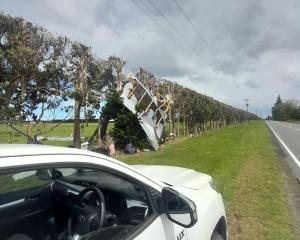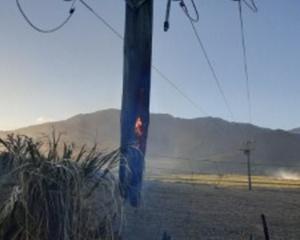The council that pioneered Māori representation in local government says it sees no need to establish a Māori ward.

That edict kindled chaos in the North Island last week, when protesters disrupted a Kaipara District Council meeting that resolved to scrap its new Māori ward.
By contrast, the West Coast Regional Council — despite its less-than-progressive reputation in the past — took steps decades ago to ensure mana whenua had seats at the table.
The council has had iwi representatives for 35 years, well before Ngāi Tahu settled its Treaty claims.
Council chairman Peter Haddock said the stable system had allowed the council to work well with Poutini Ngai Tahu for more than three decades.
"I suppose we are lucky in that we only have two rūnanga to deal with, Ngāti Waewae in the northern part of the Coast and Ngāti Māhaki [Makaawhio] in the south."
It might be more complicated for councils in the north, where there were various iwi who might have competing interests, Mr Haddock said.
"But what I can say is iwi reps have always added value to our council with their perspectives and their contributions to debates and decisions."
Rūnanga chairs Francois Tumahai (Ngati Waewae) and Paul Madgwick (Makaawhio) have full voting rights on the regional council’s major committees, but as non-elected members, cannot vote at meetings of the council itself.
Mr Madgwick said that had never bothered him.
"There’s the odd time when it would have come in handy, but I’m relaxed about it — we have plenty of influence, and as long as we’re listened to and get a fair-enough say, that’s fine."
The council-Māori relationship was further strengthened in 2020 when the regional council and iwi signed up to the country’s first Mana Whakahono ā Rohe agreement — a tool designed to help local authorities and tangata whenua agree on how they work together under the Resource Management Act.
The region’s three district councils have all followed the example, appointing the runanga chairs and other iwi reps to various committees.
Buller District Mayor Jamie Cleine said his council’s Ngāti Waewae representative Ned Tauwhare worked not only at the governance level but also on project teams.
"Especially on some of our bigger infrastructure projects, Ned has been front and centre, guiding the team and ensuring iwi input each step of the way."
The council could see no point in a Māori ward, and neither could iwi consulted in the recent six-yearly representation review, the mayor said.
"Certainly, we are guided by Ngāti Waewae in terms of their appetite for any change like a Māori ward; that’s not something they supported. "
Despite Mr Tauwhare’s inability to vote at full council meetings, the iwi influence was strong, and offered a fresh perspective, Mr Cleine said.
"He’s a good listener and a circuit breaker — he’ll listen to a lot of to-and-fro from councillors and when he speaks he’s often quite profound in encouraging us to think in different ways or take a more strategic long-term view or just remind us of the communities we represent."
Ensuring Māori were represented in local government was not about "race", as some politicians would have it, he said.
"It’s about fairness, respecting the status of the indigenous people and our obligations in the Treaty and in law."
"It’s not a thing that’s been a threat to us — it adds to council and should be embraced."
Grey and Westland district councils are also sticking with their current Māori representation models.
— Lois Williams, Local democracy reporter
— LDR is local body journalism co-funded by RNZ and NZ On Air.











